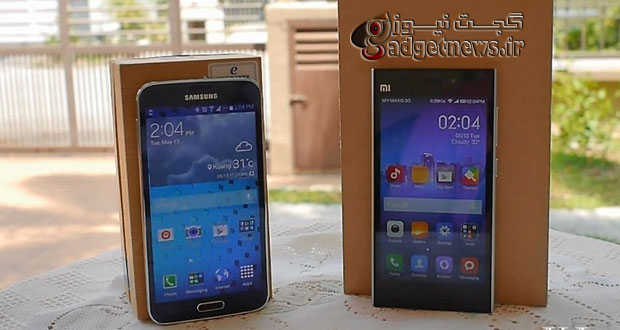سامسونگ الکترونیکس در حال طراحی و تولید حافظههای بسیار سریع UFS 2.0 از نوع ناند فلش است تا از آنها در پرچمدار سال 2015 خود بهره ببرد. بنابراین پیشبینی شده گلکسی S6 به حافظههایی مجهز شود که به ادعای سازندگانش تا 1.2 گیگابایت در ثانیه به رد و بدل اطلاعات میپردازد.
شرکتهای تولید کننده اسمارت فون هم اکنون از تکنولوژی eMMC استفاده میکنند که به طور متوسط سرعتی معادل 400 مگابایت بر ثانیه را در اختیار کاربران قرار میدهد، اما تکنولوژی یو اف اس بازیگر جدیدی است که دنیای حافظههای موبایل را چندین قدم به جلو خواهد برد.
عنوان یو اف اس مخفف Universal Flash Storage است و از ترکیب یک حافظه اس اس دی با کارتهای MMC تولید میشود. این حافظهها علاوه بر استریم مطمئن اطلاعات با حجم بالا در ارتباطات LTE-A (مانند ویدیوهای با رزولوشن بسیار بالا) تا نصف حافظههای eMMC 5.0 انرژی مصرف میکند.
از شیائومی نیز به عنوان دیگر شرکتی یاد میشود که از تکنولوژی یو اف اس در پرچمداران آینده خود استفاده خواهد کرد.
یکی از کارمندان سامسونگ به وبسایت ETNews گفته شده که “برنامه استفاده از یو اف اس با محوریت پرچمداران این شرکت در سال 2015 آغاز خواهد شد”، هر چند اضافه کرده که “مشخصات این اسمارت فون فعلا نهایی نشده است.”
چنین اظهار نظری بدین معنی خواهد بود که در نیمه نخست سال 2015 حافظههای یو اف اس در گلکسی S6 و یا هر پرچمدار دیگری که سامسونگ در دست تولید دارد، تعبیه خواهد شد.
شرکتهای توشیبا، هاینیکس و میکرون از دیگر شرکتهایی هستند که بر روی تکنولوژی یو اف اس فعالیتهای گسترده ای را آغاز کردهاند.
منبع : etnews
Samsung Electronics forestalling with UFS installed ‘super phone’
Samsung Electronics forestalling with UFS installed ‘super phone’
Next-generation memory, faster and less power consuming
Samsung Electronics will start the super phone’ competition by applying universal flash storage (UFS), a NAND Flash memory based next-generation memory standard, to its flagship smart phone model to be released next year. The strategy is to solidify its position as a leading brand in the global smart phone market with a high-end product. However, as Xiaomi is also installing UFS in its new products, according to sources, competition over market dominance is forecast to intensify next year.
According to the industry on the 10th, Samsung Electronics will mass-produce UFS 2.0 NAND Flash memory at the end of this year and will apply it to its new smart phone to be released next year. ‘Galaxy S6’ is most likely to be the flagship model for UFS 2.0 NAND Flash application. In today’s mobile environment where communications speed became faster, such as with broadband LTE-A, and full HD level large-size data consumption increased, this technology enables users to access contents at a higher speed with a smaller amount of power consumption. Therefore, it is changing the paradigm of high-end smart phone market.
UFS is a new storage standard to combine a solid state drive (SSD) of high speed and a low-power embedded multimedia card (eMMC). eMMC transmits data at the speed of 400mebabytes (MB) per second. Compared to this, UFS produces a speed of 1.2 gigabytes (GB) per second, which is as many as three times faster.
As for power consumption, it is similar to that of eMMC or even lower. Therefore, large-size data processing requires a small amount of battery consumption and produces less heating. According to technology development, power consumption will be lowered down to almost half that of eMMC 5.0.
As UFS 2.0 standard was established under the initiative of Joint Electron Device Engineering Council (JEDEC), Samsung Electronics is setting out to commence mass-production, according to sources. Samsung Electronics started development following an agreement on standardization with Nokia and Micron in 2007. SK Hynix and Toshiba are also developing the technology. While super phone market had been a ground for competition for design and additional functions, the competition at the moment is about super phones applied with UFS beyond the existing high-performance products.
The industry is keeping a close eye on China’s Xiaomi for its adoption of UFS. This is because Xiaomi is rapidly narrowing down the gap with Samsung Electronics in terms of design and performance and is preparing a next-generation model applied with UFS, according to sources.
Samsung Electronics will gradually replace various internal and external memory cards, such as SD card and micro SD card, with UFS. As the power consumption is low and transmission speed is fast, Samsung Electronics forecasts that this will achieve a large share in the existing memory card market. In particular, UFS can be applied not only to smart phones, but also various other mobile devices including a tablet PC.
“UFS is an important element for our smart phone business next year. We will start the application centering on flagship smart phones,” said a Samsung Electronics insider. “However, we cannot disclose any details because the time of a new smart phone release next year and specifications of this new model have not been finalized
 گجت نیوز آخرین اخبار تکنولوژی، علم و خودرو
گجت نیوز آخرین اخبار تکنولوژی، علم و خودرو 






